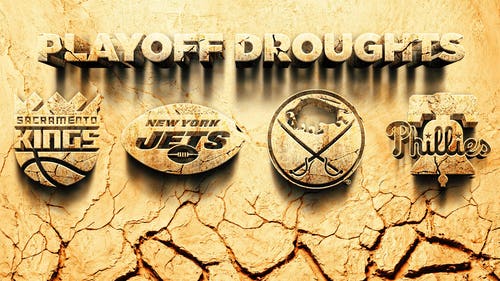
United States of baseball: The data behind the rankings
By Jake Mintz & Jordan Shusterman
FOX Sports MLB Writers
If you’re reading this, you (hopefully) have seen that we ranked all 50 states according to baseball.
While we did our best to provide the methodology behind our rankings, we realize there might be some numbers that you, the curious reader, want to know more about! Also, we want to show off some fancy charts that help illustrate some of the larger trends we discovered while researching for our rankings.
Let’s begin with the tallies of big leaguers. We knew California would be way ahead of the pack, but some of the other states atop the list might've surprised you a bit.
States such as New York, Ohio and Massachusetts being so high on the all-time leaderboard is a reflection of the fact that Major League Baseball is more than 150 years old. A gigantic percentage of big leaguers who played in the late 19th century and early 20th century were born in these states because, well, that’s where people lived at that point.
As such, we knew that using only the raw numbers of big leaguers produced throughout MLB history would be somewhat limiting. That’s why we thought it was also important to take into account the number of players from each state who appeared in the most recent major-league season.
For as much history as we incorporated into our rankings, we wanted to reflect where ballplayers come from today and where we should expect them to come from in the coming years.

Through this research, it became very clear where players are coming from, as a whopping 46.6% of American players who appeared in MLB in 2021 were born in just four states, a region we affectionately refer to as CaFloTexGa.
On the flip side, only four states — Alaska, Maine, New Hampshire and Vermont — were not represented in MLB in 2021.

California was the top state on our overall list, and it wasn’t close. That was due in large part to the lead California has on the competition in regard to major-league players, both in 2021 and in the history of the sport.
However, unlike states such as New York, Ohio and Massachusetts, which compiled the bulk of their MLB production in the first half of the 20th century (or earlier), California’s spike occurred almost entirely in the past 80 years, and it simply hasn’t slowed down.

That huge spike you see from California in the late 1960s/early '70s is the result of 1) the Baby Boomer generation and 2) MLB’s westward expansion. California’s population increased by more than 50% from the 1940s to the 1950s. The Boomers hit their early 20s right in the middle of the 1960s, just in time for their big-league debuts. That timing was perfect, considering the Angels started in Anaheim in 1961, the A’s moved to Oakland from Kansas City in 1968, and the Padres began play in San Diego in 1969.
At that point, teams still disproportionately scouted their local areas in a way that doesn’t happen anymore. So when those three new-to-Cali clubs, not to mention the established Giants and Dodgers, needed players to fill their farm systems, they had an assortment of nearby, athletically inclined Boomers from which to choose.
Speaking of CaFloTexGa …
One element we didn’t weigh quite as heavily as a state’s collegiate baseball presence is its depth and quality of high school baseball. That’s mostly because it’s much more difficult to quantify how many high school baseball teams exist in each state, not to mention the wide variety of travel ball teams with players from multiple states.
That said, there’s one measure of the current high school baseball landscape that does well to support the top of our rankings. Each spring, Perfect Game maintains a ranking of the top 50 high school teams in the country.
Based on the end-of-season rankings from the past five years — 250 schools, including several that appeared multiple times — it’s clear where the best high school ball is being played. Florida (43 teams), California (38), Texas (31), Georgia (22) and Alabama (10) lead the pack as the only states with double-digit representation.
What's more, 17 states have not had a single team in the end-of-season top 50 in the past five years, most populous among those Wisconsin, Minnesota, Connecticut and Iowa. Meanwhile, CaFloTexGa accounts for 28 of the schools in Perfect Game’s preseason top 50 for 2022, so things aren't changing anytime soon.
Let’s get back to the collegiate ranks, though. If you looked at the rankings and saw the huge numbers for certain states in the "collegiate teams" category, you might have wondered how in the world there could be that many teams in a state, especially if you are used to following only Division I baseball. Allow us to explain.
While the bulk of the major Div. I programs are in the Southeast, in Texas or on the West Coast, the opposite is true for the lower levels of four-year college baseball. In Divisions II and III, the majority of the teams are concentrated in the Midwest and Northeast.
Some examples:
* No state has more Div. II (20) or Div. III (55) teams than Pennsylvania.
* West Virginia has more Div. II teams (13) than all but four other states (Pennsylvania, California, Georgia, New York).
* Massachusetts has more Div. III teams (37) than California (nine), Texas (16), Georgia (six) and Florida (zero) combined.
* Iowa has only one Div. I team but 11 Div. III, 11 NAIA and 11 junior college teams.
* Minnesota has one Div. I team but eight Div. II and 17 Div. III teams.

Junior college baseball also skews heavily toward certain regions, depending on the level (there are three divisions in the NJCAA).
Some fun facts on the jucos:
* California has its own junior college baseball system, completely separate from the rest of the country, called the CCCAA. Eighty-eight teams compete in it.
* There’s a similar conference in the Pacific Northwest, called the Northwest Athletic Conference, that consists solely of junior colleges in Oregon, Washington, Idaho and British Columbia. Those conferences exist outside the NJCAA.
* The state with the most NJCAA Div. I programs is Texas, with 29. No surprise there. Second is Florida, with 20. Sounds about right. Third is … Kansas? Kansas is tied with Alabama, with 18.
* Kentucky is the most populous state without a junior college program, but it makes up for that with 10 NAIA programs, tied for seventh-most of any state.
Finally, for those who saw our rankings and were like, "It’s not fair that the big states are at the top," we will point out that there is one measure in which North Dakota comes out on top. Of all 50 states, it has by far the most baseball teams per million residents (20.54, ahead of Kansas with 13.96 teams per million).
Maybe North Dakota should’ve been No. 1 after all!
Jake Mintz and Jordan Shusterman, creators of the Twitter account Céspedes Family BBQ, write about all things baseball for FOX Sports.





